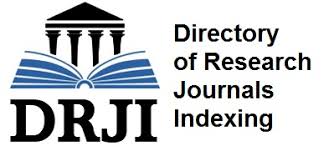Role of Physical Therapy in Reducing Economic Burden of Low Back Pain: A Social Sciences Analysis
DOI:
https://doi.org/10.63516/Keywords:
Low back pain, Physical therapy, Economic burden, Social sciences, Rehabilitation, Cost-analysis, Quality of lifeAbstract
Background: Low back pain (LBP) is a major contributor to global disability and economic burden, significantly impacting healthcare systems, workplace productivity, and individual well-being. Despite its high prevalence, LBP is often poorly managed, leading to chronicity and increased societal costs.
Methods: A cross-sectional, mixed-methods study was conducted in an urban setting rehabilitation centers in Pakistan over a 6-month period. A total of 385 participants with non-specific LBP were selected using purposive sampling. Participants were categorized into two groups: those receiving structured physical therapy and those under conventional care management. Outcome measures included direct treatment costs, number of workdays lost, Visual Analog Scale (VAS) for pain, and patient-reported quality of life. Data were analyzed using SPSS v26 for quantitative data (descriptive statistics, t-tests, and regression analysis), while thematic analysis was applied to qualitative responses.
Results: Participants receiving physical therapy demonstrated a significant reduction in direct healthcare costs compared to those under conventional care (Mean±SD: PKR 6,800±1,200 vs. PKR 11,300±1,800; p<0.001). The mean number of workdays lost was also significantly lower in the physical therapy group (5.2±2.1 days vs. 11.6±3.4 days; p<0.01). Pain intensity, measured using the Visual Analog Scale, decreased from a baseline mean of 7.6±1.1 to 3.1±0.9 after four weeks of therapy (p<0.001). Quality of life scores, assessed via a modified WHOQOL-BREF, improved significantly in domains of physical health and social participation (p<0.05).
Conclusion: Physical therapy plays a crucial role in reducing the economic burden of low back pain through cost-effective management and improved functional outcomes. A socially informed, early-intervention model of care can significantly reduce long-term economic burden on individuals and health systems. Findings support policy recommendations for integrating physical therapy into primary care strategies as a cost-effective approach to LBP management.
References
Abro, S. A., Zaman, B. M., Zia, K., Arzoo, O., Sandeela, K. A., Peer Muhammad, M., & Ansari, K. (2024). Attributes of low back pain among physical therapists and nurses in Pakistan: Low back pain among physical therapists and nurses. Pakistan Journal of Health Sciences, 5(2), 45-52. https://doi.org/10.54393/pjhs.v5i02.1295
Chang, D., Lui, A., Matsoyan, A., Safaee, M. M., Aryan, H., & Ames, C. (2024). Comparative review of the socioeconomic burden of lower back pain in the United States and globally. Neurospine, 21(2), 487-501. https://doi.org/10.14245/ns.2448372.186
Chen, N., Fong, D. Y. T., & Wong, J. Y. H. (2023). The global health and economic impact of low-back pain attributable to occupational ergonomic factors in the working-age population by age, sex, geography in 2019. Scandinavian Journal of Work, Environment & Health, 49(7), 487-495. https://doi.org/10.5271/sjweh.4116
Fatoye, F., Gebrye, T., Mbada, C. E., & Useh, U. (2023). Clinical and economic burden of low back pain in low- and middle-income countries: A systematic review. BMJ Open, 13(4), e064119. https://doi.org/10.1136/bmjopen-2022-064119
Gatchel, R. J., Polatin, P. B., Novy, D., & Mayer, T. G. (2003). Treatment- and cost-effectiveness of early intervention for acute low-back pain patients: A one-year prospective study. Journal of Occupational Rehabilitation, 13(1), 1-9. https://doi.org/10.1023/A:1021823505774
GBD 2021 Low Back Pain Collaborators. (2023). Global, regional, and national burden of low back pain, 1990-2020, its attributable risk factors, and projections to 2050: A systematic analysis of the Global Burden of Disease Study 2021. The Lancet Rheumatology, 5(6), e316-e329. https://doi.org/10.1016/S2665-9913(23)00098-X
Grabovac, I., Ehrmann, C., Haider, S., Dorner, T. E., Fialka-Moser, V., & Herceg, M. (2022). Summarizing the effects of different exercise types in chronic low back pain – a systematic review of systematic reviews. BMC Musculoskeletal Disorders, 23(1), 801. https://doi.org/10.1186/s12891-022-05722-x
Kamper, S. J., Apeldoorn, A. T., Chiarotto, A., Smeets, R. J., Ostelo, R. W., Guzman, J., & van Tulder, M. W. (2015). Multidisciplinary biopsychosocial rehabilitation for chronic low back pain: Cochrane systematic review and meta-analysis. BMJ, 350, h444. https://doi.org/10.1136/bmj.h444
Li, Y., Zou, C., Guo, W., Han, F., Fan, T., Zang, L., & Huang, G. (2024). Global burden of low back pain and its attributable risk factors from 1990 to 2021: A comprehensive analysis from the global burden of disease study 2021. Frontiers in Public Health, 12, 1480779. https://doi.org/10.3389/fpubh.2024.1480779
Patel, S., Hee, S. W., Mistry, D., Mirza, A., Lindsey, L., Underwood, M., & Bremner, S. (2022). Cost-effectiveness of multidisciplinary interventions for chronic low back pain: A systematic review. The Clinical Journal of Pain, 38(3), 137-148. https://doi.org/10.1097/AJP.0000000000001010
Tawiah, A. K., Desmeules, F., Finucane, L., Puentedura, E. J., Rushton, A., Daneau, C., Bureau, N. J., Piche, N., Roy, J. S., Tousignant-Laflamme, Y., Wideman, T. H., & Woodhouse, L. J. (2021). Cost-effectiveness of physiotherapeutic interventions for low back pain: A systematic review. Physiotherapy, 113, 168-176. https://doi.org/10.1016/j.physio.2020.08.005
Wallwork, S. B., Braithwaite, F. A., O'Keeffe, M., Travers, M. J., Summers, S. J., Lange, B., Hince, D. A., Costa, L. O. P., Menezes Costa, L. D. C., Chiera, B., & Moseley, G. L. (2024). The clinical course of acute, subacute and persistent low back pain: A systematic review and meta-analysis. CMAJ, 196(2), E29-E46. https://doi.org/10.1503/cmaj.230542
Whitehurst, D. G., Lewis, M., Yao, G. L., Bryan, S., Raftery, J. P., Mullis, R., & Hay, E. M. (2012). What is the most cost-effective treatment for patients with low back pain? A systematic review. Best Practice & Research Clinical Rheumatology, 19(4), 671-684. https://doi.org/10.1016/j.berh.2005.03.007
Williams, A. C. D. C., Fisher, E., Hearn, L., & Eccleston, C. (2020). Cost-effectiveness of pain management services for chronic low back pain: A systematic review of published studies. BMC Health Services Research, 20(1), 120. https://doi.org/10.1186/s12913-020-5013-1
Wippert, P. M., Drießlein, D., Beck, H., Schneider, C., Puschmann, A. K., Banzer, W., & Schiltenwolf, M. (2020). The feasibility and effectiveness of a new practical multidisciplinary treatment for low-back pain: A randomized controlled trial. Journal of Clinical Medicine, 9(1), 115. https://doi.org/10.3390/jcm9010115
Downloads
Published
Issue
Section
License
Copyright (c) 2025 Archives of Management and Social Sciences

This work is licensed under a Creative Commons Attribution 4.0 International License.








